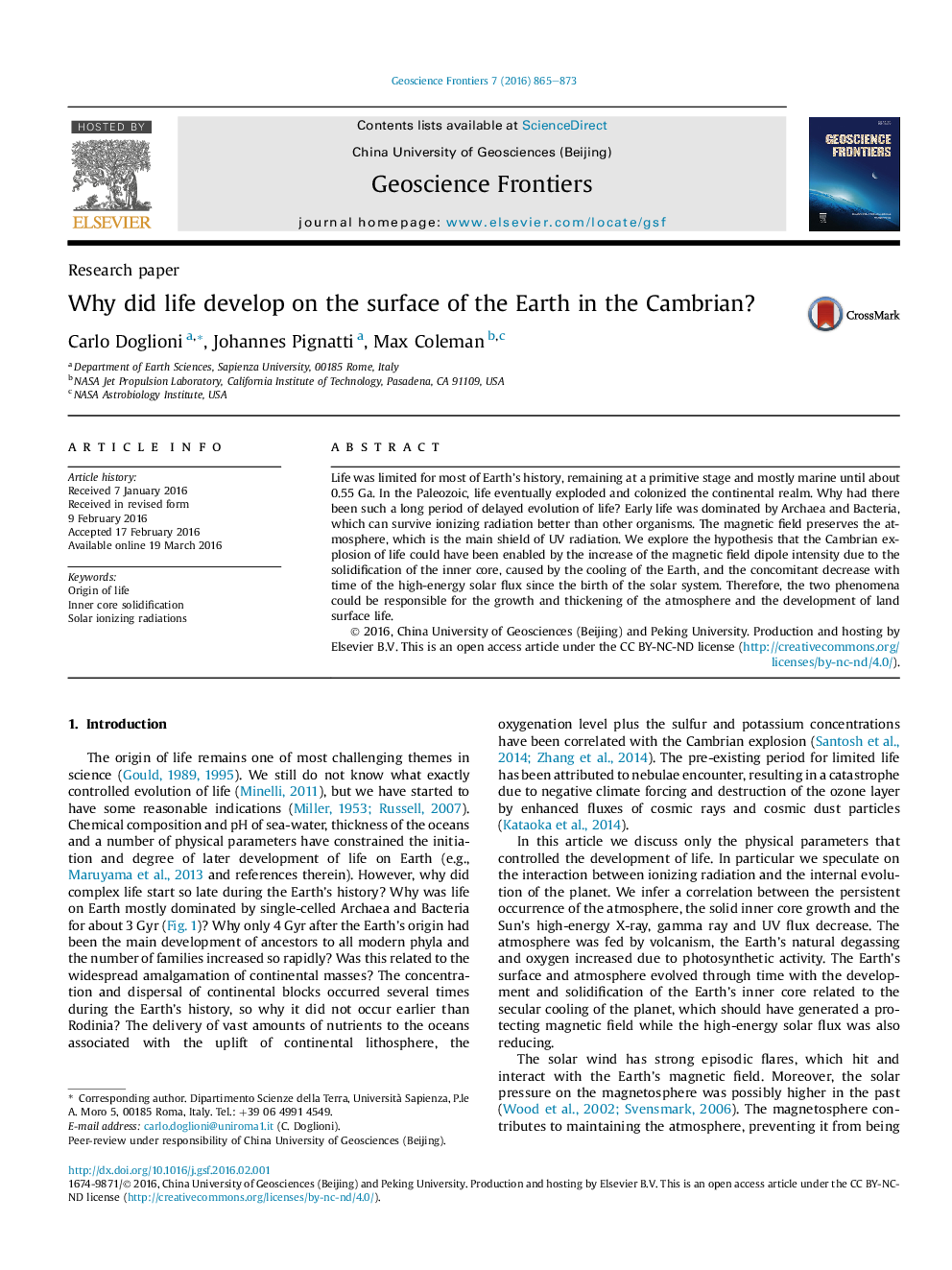| کد مقاله | کد نشریه | سال انتشار | مقاله انگلیسی | نسخه تمام متن |
|---|---|---|---|---|
| 4681446 | 1413816 | 2016 | 9 صفحه PDF | دانلود رایگان |
• Decrease in solar high-energy flux by more than 100 folds from 4.5 Ga to the present.
• Earth's inner solid core started to solidify after 1.5 Ga.
• Stronger magnetic field increased protection from the solar wind.
• Concomitant decrease of ionizing radiation allowed explosion of surface life.
Life was limited for most of Earth's history, remaining at a primitive stage and mostly marine until about 0.55 Ga. In the Paleozoic, life eventually exploded and colonized the continental realm. Why had there been such a long period of delayed evolution of life? Early life was dominated by Archaea and Bacteria, which can survive ionizing radiation better than other organisms. The magnetic field preserves the atmosphere, which is the main shield of UV radiation. We explore the hypothesis that the Cambrian explosion of life could have been enabled by the increase of the magnetic field dipole intensity due to the solidification of the inner core, caused by the cooling of the Earth, and the concomitant decrease with time of the high-energy solar flux since the birth of the solar system. Therefore, the two phenomena could be responsible for the growth and thickening of the atmosphere and the development of land surface life.
Figure optionsDownload as PowerPoint slide
Journal: Geoscience Frontiers - Volume 7, Issue 6, November 2016, Pages 865–873
